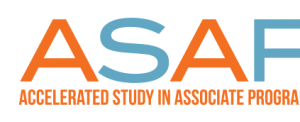Graduation ASAP: How Wrap-around Programs Might be the Answer to CUNY’s Graduation Problem
- Nina Medernach
- Jul 6, 2018
- 3 min read

It is the spring of 2012, and Josh Tanon is falling behind in school. The stress of classes, family, and work commitments had been too much, forcing him to give up on work. A smart choice for his grades, but one that has consequences on his household’s disposable income. His single mother is struggling to put him and his brother through college and financial problems combined with a lack of useful advising has left josh to fall behind.
CUNY has a graduation problem. The public college system giant, which when combined with the greater SUNY system is the largest public university network in the United States, has difficulties keeping students enrolled to graduation. When compared to other NYC colleges, such as Columbia, NYU, or Fordham, the rate of graduation for CUNY schools’ BA programs is at least 20% lower than the average, with a 20% drop from that for Community Colleges. These rates are abysmally low, and while some may blame poor work ethic or low preparation from high school, others have turned to wrap around costs as the major barrier between CUNY students and walking across the stage to receive their diploma.
The logic behind this theory is that while students who enroll are able and motivated to attend college, wrap around costs such as books, tutoring, or transit can impede students from being able to fully complete their prospective degrees. Average transit costs for CUNY students for one academic year are roughly $1,088, which is equivalent to about ¼ of the total cost of tuition at a CUNY college for that year. This barrier can force students to choose between going to class or being able to eat for the week, and while many make every effort to attend class as often as possible, sometimes the money just isn’t available. Additionally, book prices are incredibly high and tutoring itself can be expensive. These support costs add up sometimes coming to match the price of attending a CUNY school in the first place. There is a clear correlation between attending class and eventual graduation, and if students are not able to attend class due to these type of wrap around costs it is very likely they will eventually drop out all together.
There is currently a program on some CUNY campuses called ASAP, which is trying to fix this problem by targeting wrap around costs directly. ASAP, which stands for the Accelerated Study in Associate Programs, is available in the Borough of Manhattan, Bronx, Hostos, Kingsborough, LaGuardia, and Queensborough Community Colleges, as well as Medgar Evers College, College of Staten Island, and the New York City College of Technology. The program focuses on helping students with the wrap around costs of attending a CUNY school so that they have every resource available to them in order to make sure they graduate. According to Wendy Fernández, the Valedictorian for Hostos Community College for 2016 and an ASAP Alum, “Honestly, I do not think I would be able to graduate on time without the constant support of the ASAP program.”
ASAP works with students to mentor, tutor and support them in any way necessary, meaning financially or even emotionally they are there if you need them. This humanizing touch is imperative according to Bronx Community College Salutatorian Arlette Butcher, “There was genuine concern about my well-being. She [her mentor] focused on the whole person and not just my education”. This compassionate way of approaching education has proven itself with unbelievable results. There has been a more than doubling of the graduation rate when compared to the overall student body. This program, which has been active since 2007, has shown clear results, to the point that they have recently expanded to John Jay College through the Accelerate Complete Engage program (or ACE) and they plan to expand even further through the CUNY system for students starting a BA in the 2018-19 academic year.
Josh Tanon, who in the spring of 2012 was struggling to keep up with classes, joined ASAP the following Fall. He graduated recently, going on to get an internship at NASA with hopes for MIT in the future. The success of these programs proves definitively that in targeting wrap around costs, graduation rates can increase exponentially, and with average graduation rates in the 30s it is imperative that the CUNY system attempt to expand such efforts to all of their colleges and universities.










Comments